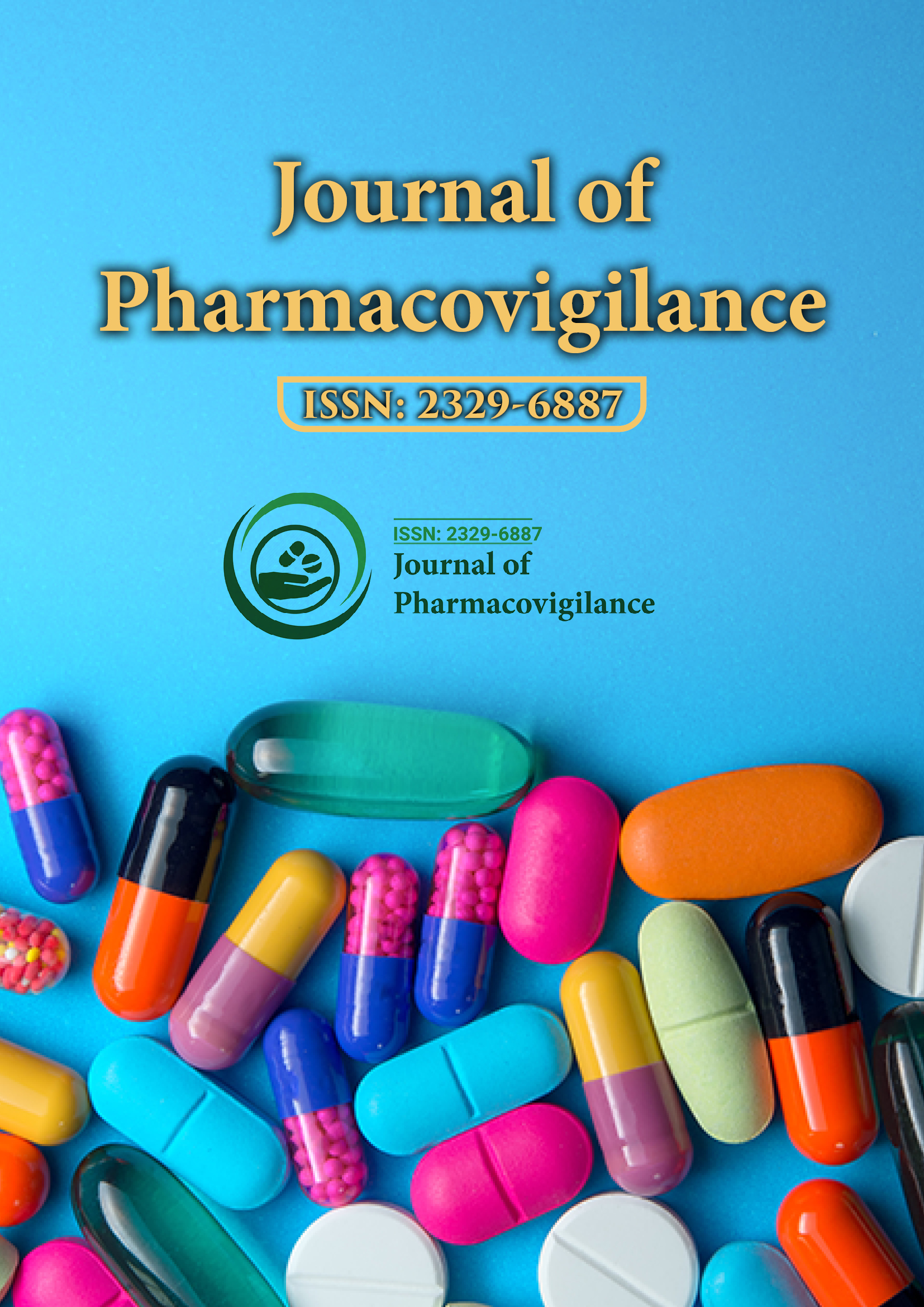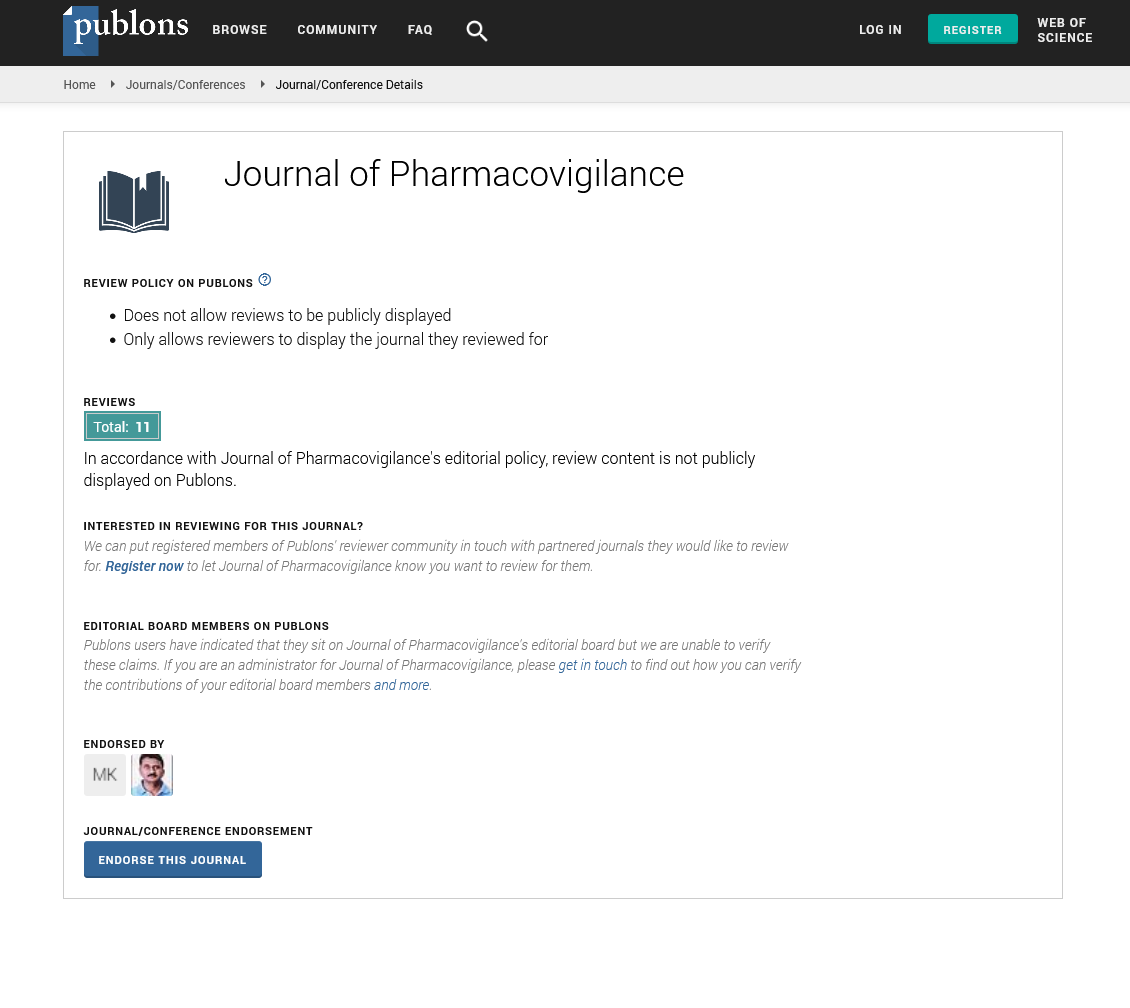Indexed In
- Open J Gate
- JournalTOCs
- The Global Impact Factor (GIF)
- RefSeek
- Hamdard University
- EBSCO A-Z
- OCLC- WorldCat
- Publons
- Euro Pub
- Google Scholar
Useful Links
Share This Page
Journal Flyer

Open Access Journals
- Agri and Aquaculture
- Biochemistry
- Bioinformatics & Systems Biology
- Business & Management
- Chemistry
- Clinical Sciences
- Engineering
- Food & Nutrition
- General Science
- Genetics & Molecular Biology
- Immunology & Microbiology
- Medical Sciences
- Neuroscience & Psychology
- Nursing & Health Care
- Pharmaceutical Sciences
Perspective - (2024) Volume 12, Issue 1
Cannabis and Cannabinoids: Addressing the Pharmacovigilance Gap
Yong Tae Kwak*Received: 29-Feb-2024, Manuscript No. JP-24-25633; Editor assigned: 01-Mar-2024, Pre QC No. JP-24-25633(PQ); Reviewed: 15-Mar-2024, QC No. JP-24-25633; Revised: 22-Mar-2024, Manuscript No. JP-24-25633(R); Published: 29-Mar-2024, DOI: 10.35248/2329-6887.24.12.468
About the Study
The past decade has witnessed a remarkable shift in the perception of cannabis and its constituents, particularly Cannabidiol (CBD) and Tetrahydrocannabinol (THC). Once relegated to the fringes of medicine, growing preclinical and clinical evidence suggests a therapeutic role for cannabinoids in a variety of conditions. The market for cannabis-derived products, encompassing oils, edibles, and smokable flower. However, amidst this burgeoning landscape, a critical gap remains–the insufficiency of strong pharmacovigilance data for cannabis and cannabinoids.
The imperative of pharmacovigilance
Pharmacovigilance, the science of monitoring drug safety, plays a fundamental role in ensuring patient well-being. Through careful collection, analysis, and reporting of Adverse Events (AEs), pharmacovigilance allows for the identification and mitigation of potential risks associated with medications. This safeguards patients from unforeseen complications and guides clinicians in making informed treatment decisions.
The uniquely challenging landscape of cannabis pharmacovigilance
Unlike traditional pharmaceuticals that undergo rigorous preclinical testing, controlled clinical trials, and stringent regulatory oversight, cannabis products often circumvent these processes. This stems, in part, from the complex legal status of cannabis on a global scale. The classification of cannabis as a Schedule I drug in many countries has impeded research efforts, hindering the generation of strong safety data.
Furthermore, the sheer heterogeneity of cannabis products poses a significant challenge. Unlike a standardized pharmaceutical formulation, the composition of cannabis products can vary considerably based on cultivation practices, processing techniques, and chemotypic profiles (cannabinoid and terpene ratios). This inherent variability makes it difficult to isolate the safety profile of specific cannabinoids or product formulations.
Consequences of the pharmacovigilance gap
The lacuna in cannabis pharmacovigilance has several concerning ramifications. Patients and clinicians lack comprehensive information on the potential risks associated with long-term cannabis use, particularly for specific medical conditions. Additionally, the dearth of data on potential interactions between cannabis and other medications creates a precarious situation for patients on polypharmacy regimens.
Strategies for strong pharmacovigilance
Implementing standardized systems for capturing and reporting AEs associated with cannabis use is important. This would require collaboration between regulatory bodies, healthcare providers, and the cannabis industry to establish uniform reporting protocols.
Encouraging well-designed, prospective clinical trials that evaluate the safety and efficacy of standardized cannabis products for specific medical conditions is essential. These trials should incorporate diverse populations to account for potential inter-individual variations in response to cannabinoids.
Establishing patient registries for individuals using medical cannabis can provide invaluable longitudinal data on safety. By tracking patients over time, these registries can aid in identifying trends in AEs and potential long-term complications.
Raising public awareness about the importance of reporting AEs associated with cannabis use is crucial. Educational campaigns can empower patients to become active participants in pharmacovigilance. Similarly, educating healthcare professionals on the evolving landscape of cannabis science and the importance of pharmacovigilance is vital for informed clinical decision-making.
The potential therapeutic benefits of cannabinoids are gaining traction in the medical community. However, responsible integration of cannabis into mainstream medicine on a comprehensive understanding of its safety profile. By prioritizing strong pharmacovigilance practices, the current knowledge gap and ensure patient safety while unlocking the therapeutic potential of cannabis and cannabinoids.
Citation: Kwak YT (2024) Cannabis and Cannabinoids: Addressing the Pharmacovigilance Gap. J Pharmacovigil. 12:468.
Copyright: © 2024 Kwak YT. This is an open-access article distributed under the terms of the Creative Commons Attribution License, which permits unrestricted use, distribution, and reproduction in any medium, provided the original author and source are credited.

